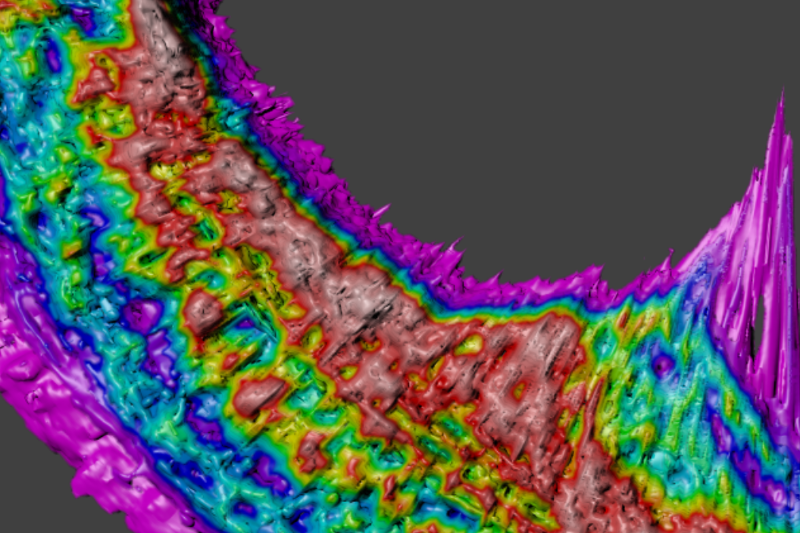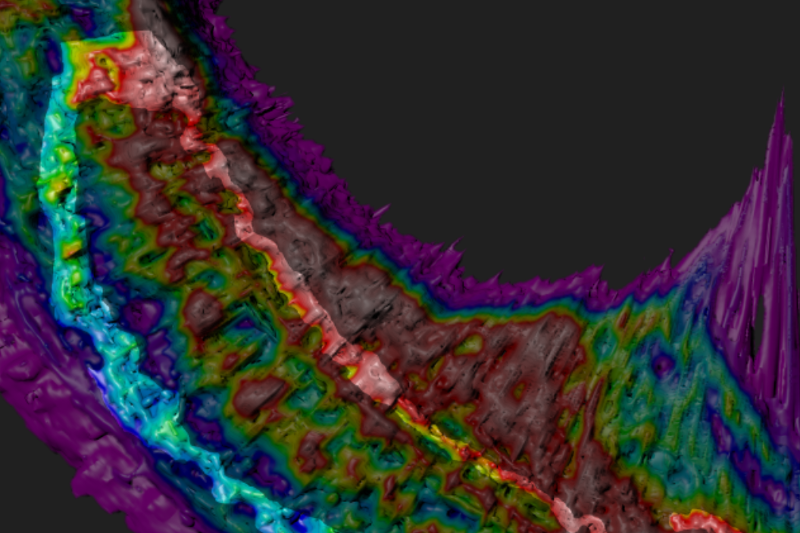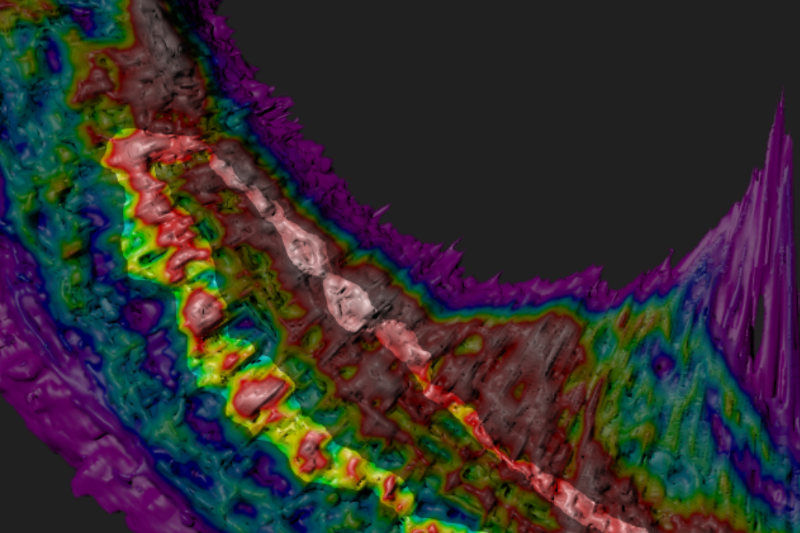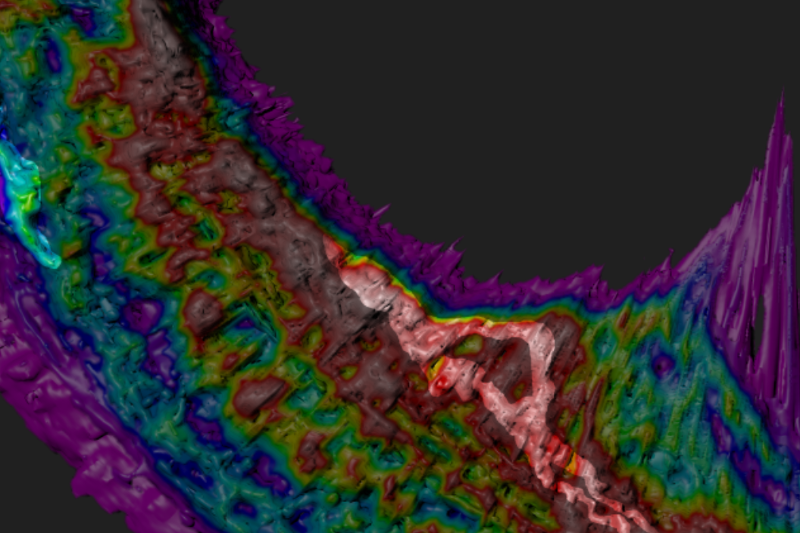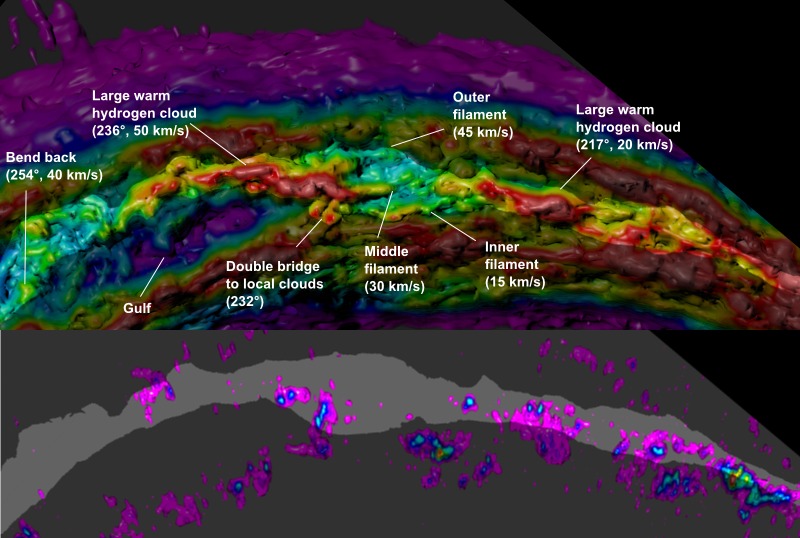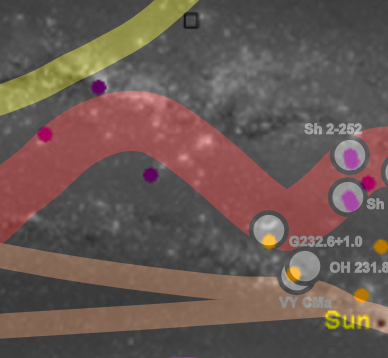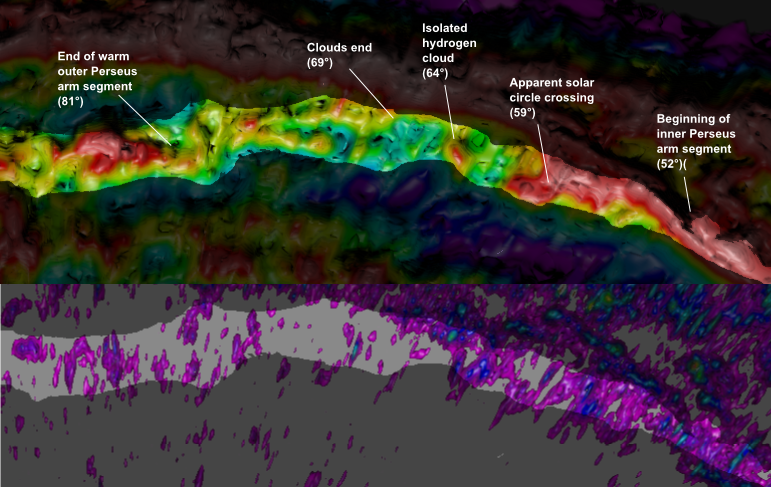Benjamin versus Benjamin
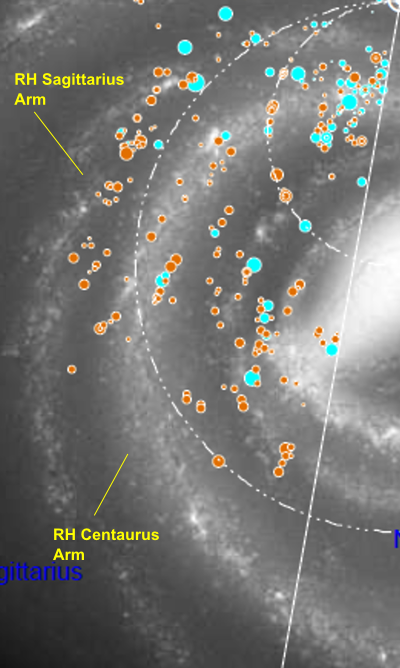
Robert Benjamin is one of my favourite astronomers. Best known for his association with the Spitzer infrared space telescope, Benjamin has used the data from this telescope for a number of creative and influential projects.
One of these. the gigantic GLIMPSE/MIPSGAL infrared mosaic of the inner galactic plane, helped inspire the Milky Way Explorer, was used for the Milky Way Zooniverse citizen science project, and influenced the even larger Galactic Plane Atlas expected to be released in 2014.
Benjamin and his colleagues also commissioned Robert Hurt to create his widely used image of the Milky Way, which has been used in many recent scientific papers, even by researchers who disagree strongly with some of Benjamin's conclusions.
The Hurt image was based on available parallax and kinematic data but was created primarily to illustrate the Spitzer scientists' conclusions about the structure of the Milky Way, including the position of the bar and the existence of two major spiral arms. It is therefore ironic that a recent paper used the Hurt image to question one of Benjamin's major conclusions about the Milky Way.
Is the Sagittarius arm a major arm?
Based on the concentrations of red giant stars observed by the Spitzer infrared space telescope, Benjamin concludes that the Milky Way has only two major spiral arms: the Perseus and Centaurus arms. The Hurt illustration follows this conclusion by showing the Sagittarius and Norma arms as much smaller structures.
However, a 2013 preprint described in my previous blog post uses kinematic distance estimates and data from the earlier MSX infrared space telescope to challenge Benjamin's conclusion.
The red MSX sources (RMS) researchers overlay their results on the Robert Hurt image in their paper's Figure 6. A detail of this image showing the fourth quadrant is shown to the right. I have added labels showing the position of the Sagittarius and Centaurus arms in Robert Hurt's image.
As you can see, the RMS figure shows numerous complexes of massive young stellar objects and HII regions (blue circles) and individual objects (red circles) in the vicinity of the Sagittarius arm - more than can be seen even at the location of the Centaurus arm in Hurt's image. The RMS paper concludes that the Sagittarius arm is also a major arm.
But does Hurt's image show the correct locations of the spiral arms in the fourth quadrant?
I think not.
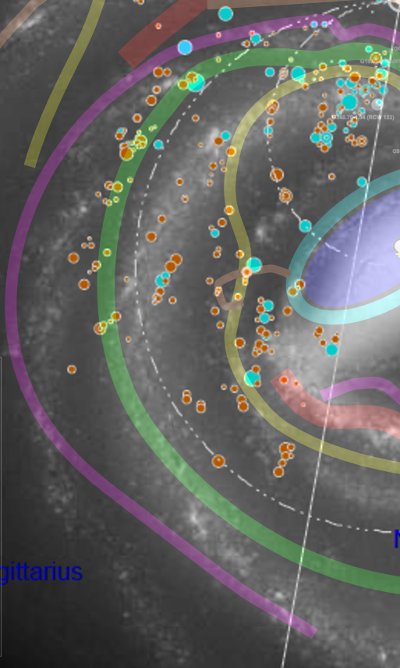
Improved alignment
In the image on the left, I have overlaid the RMS image on top of the model of the Milky Way presented on this site. The Sagittarius arm is shown in magenta, the Centaurus arm in green and the Norma arm in yellow,
As you can see, there are major differences between my model and the Hurt image in the fourth quadrant. In particular, using my model, the red MSX sources now appear in the Centaurus arm. The Sagittarius arm is largely devoid of young stellar objects and HII regions in the fourth quadrant. More generally there is a greater alignment between these sources and my model than the Hurt image.
Although my model was developed completely independently from the RMS research, the alignment is not that surprising because the technique to determine distances used by my model is almost exactly the same as the one used by the RMS paper. Both use the same rotation model for the Milky Way, taken from Reid 2009 as explained here. In the absence of parallax data, both use this rotation model to derive distance estimates for objects identified in atomic hydrogen surveys. My model is based upon the position of large hydrogen clouds in the LAB HI survey. The RMS paper uses the more detailed VLA Galactic Plane Survey and the Southern Galactic Plane Survey results where available.
The Reid 2009 rotation model was recently confirmed by the Reid and Honma 2013 paper I blogged about previously.
Benjamin versus Benjamin
So in summary, Robert Benjamin was right because he was wrong. Benjamin was right in concluding that the Sagittarius arm is a minor arm with only a few major star formation regions. The RMS paper appears to have concluded otherwise because of inaccuracies in the Hurt image commissioned by Benjamin and his colleagues.
This raises an interesting question: why is the Hurt image inaccurate in the fourth quadrant?
A question of tangents
I do not know the sources used to construct the Hurt image. (I've written to Robert Benjamin to ask about that.) However, I think that it is a good assumption that the image in the fourth quadrant used kinematic distance estimates based on velocity data from atomic hydrogen or molecular cloud surveys. This is because almost no parallax measurements for fourth quadrant objects at large distances from the sun have been published and photometric estimates are unlikely because of the large distances and heavy dust obscuration.
One of the important pieces of information available from velocity surveys is the tangents of spiral structures. This is the galactic longitude at which these structures first become visible.
The tangent value depends upon the temperature of the detected gas. If we use 70K, then the Sagittarius arm first appears in the fourth quadrant LAB HI survey around 281°, the Centaurus arm around 288° and the Norma arm around 312.5°. This information can be viewed in the Velocity Explorer; for example, here. For simplicity, I've shown the combined LAB HI data from the Velocity Explorer fourth quadrant at the end of this blog post with tabs that highlight the velocity associated with the Sagittarius, Centaurus and Norma arms.
It appears that the Hurt image places the tangent of the Sagittarius arm around 288° and the tangent for the Centaurus arm at around 312°. As a result, the Hurt image appears to assign the tangent my model uses for the Centaurus arm to the Sagittarius arm, and the tangent my model uses for the Norma arm to the Centaurus arm.
The Hurt image makes the fourth quadrant Norma arm a minor structure running close to the galactic bar, something I would argue is incompatible with the velocity data. In fact, as I'll discuss in a future blog post, both hydrogen and RMS data suggest that the Norma arm is much more substantial than the Sagittarius arm and perhaps could be ranked with the Perseus and Centaurus arms as a major Milky Way structure.
But wait, there's more!
There are many other interesting features visible in the RMS data, some of which I'll discuss in my next blog post.
